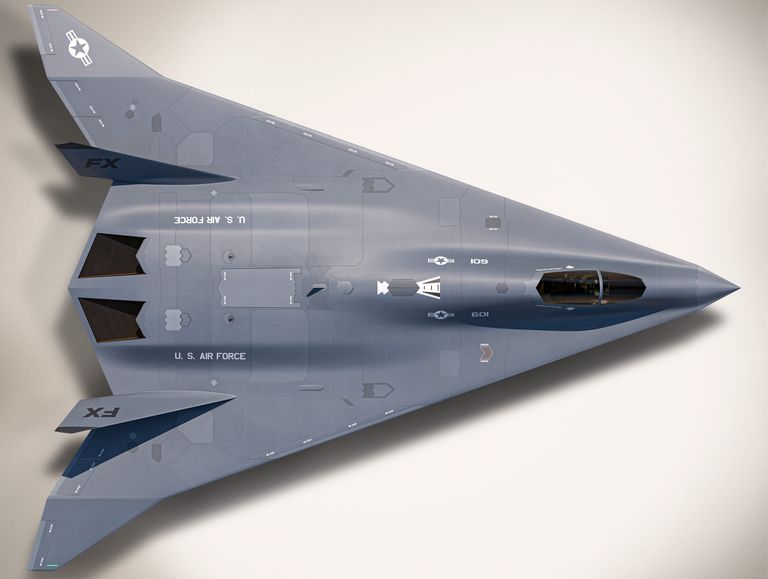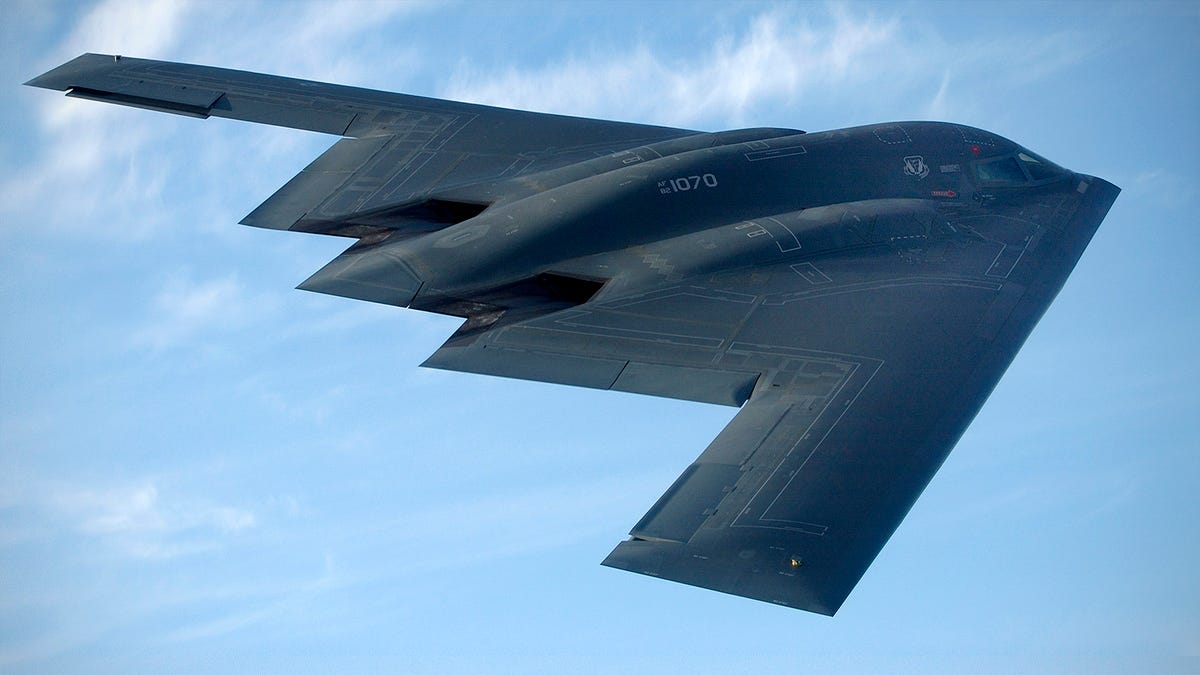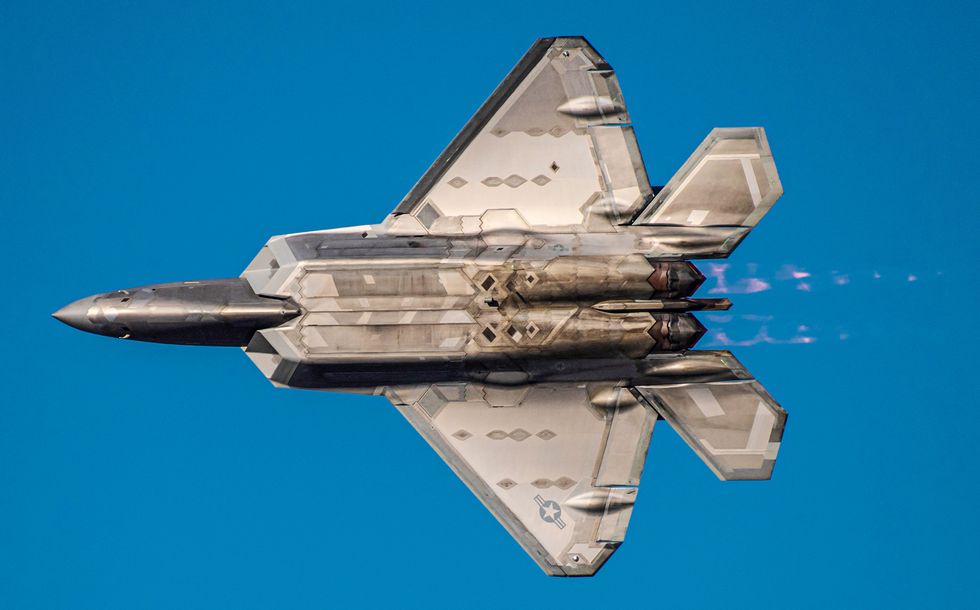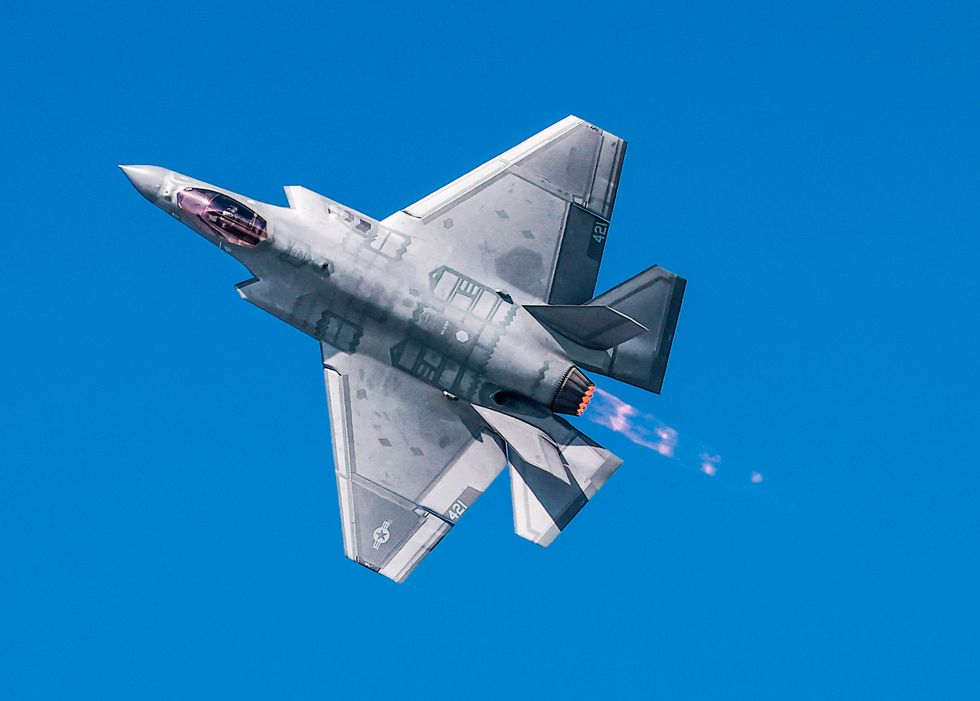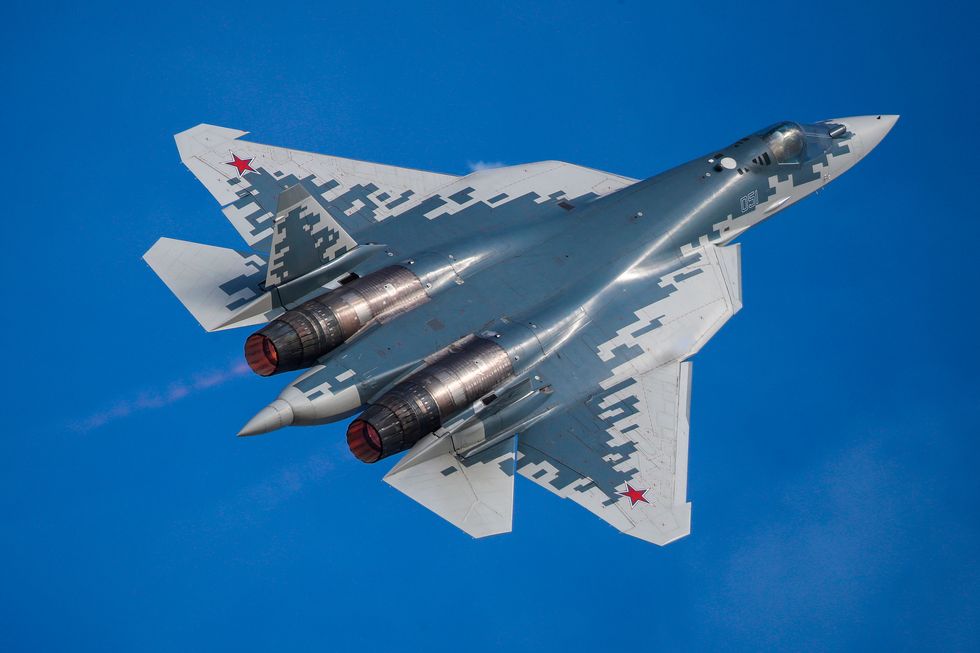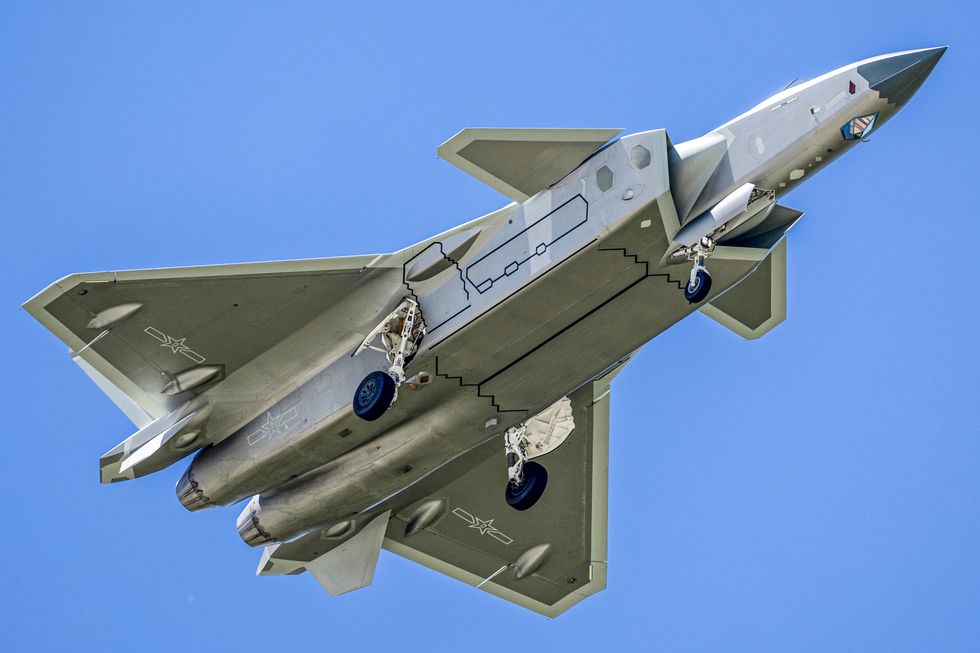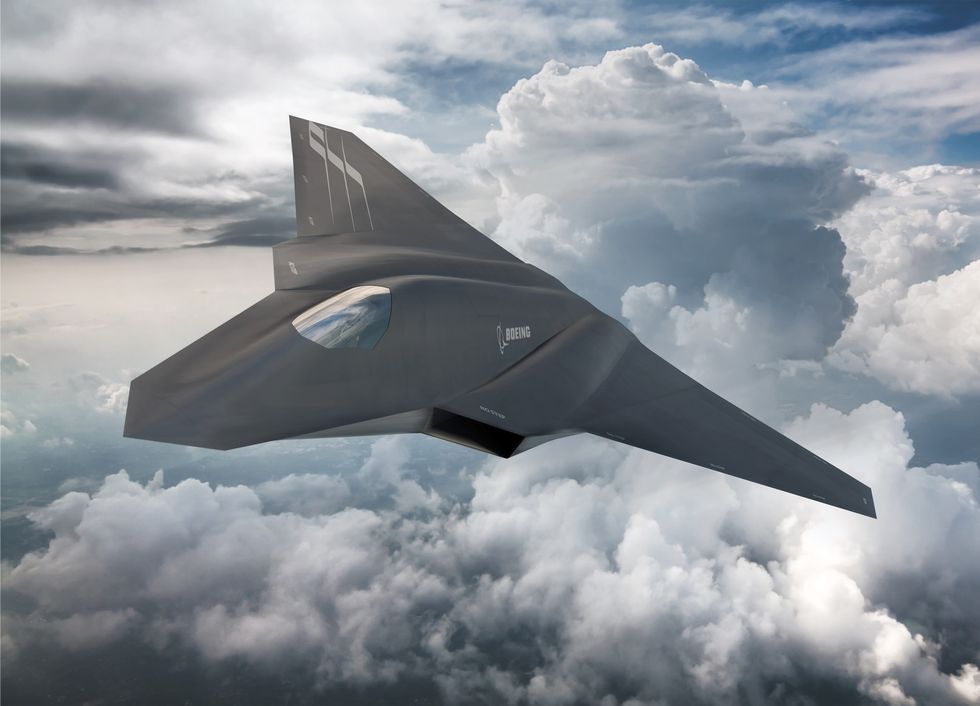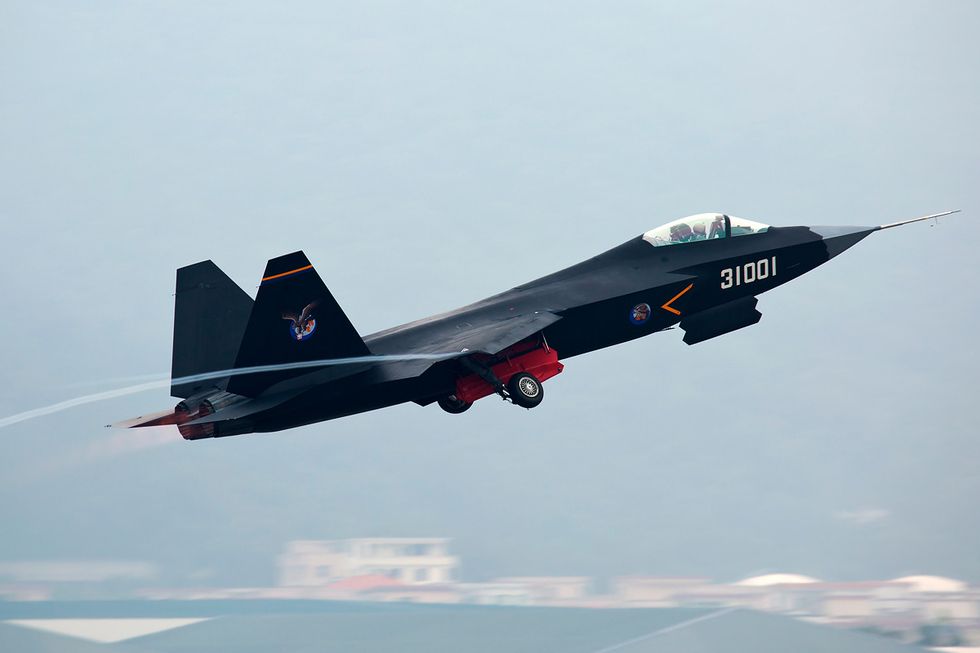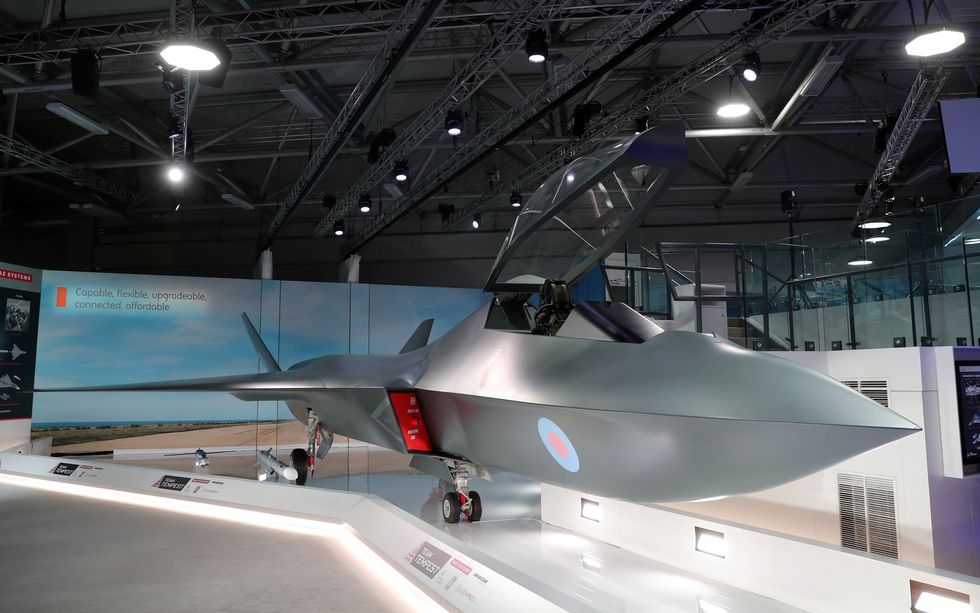In March 2017, the crowning achievement of the Chinese aircraft manufacturer Chengdu, the J-20 Mighty Dragon, entered service for the People’s Liberation Army’s Air Force. It was the world’s first operational stealth aircraft to be designed outside the United States, and its introduction brought America’s three-decade monopoly on stealth aviation to an immediate end.
The Mighty Dragon looked similar to the best fighter in the sky today, America’s F-22 Raptor. But F-22 production was halted in 2011 after just 186 jets. Today, fewer than 120 are fit for combat. And as each day passes, America’s F-22 fleet inches closer to retirement while China’s J-20 fleet continues to grow. To keep up, the U.S. has been secretly developing its next generation of stealth fighters over the past nine years.
In 2013, Arati Prabhakar, who at the time was the director of the Defense Advanced Research Projects Agency, said that the U.S. had begun studying an “air dominance initiative.” Today, a bit more is known about the program. Analysts believe the new jet, known as the Next Generation Air Dominance (NGAD) program, will have powerful new engines, fly with drone wingmen, and have advanced sensors and radars that use machine-learning and AI to target enemy aircraft.
It’s hard to say how stealthy the new NGAD jets will be. The F-22 is already nearly undetectable on enemy radars in most conditions. But aircraft manufacturers achieve stealth—a craft’s capability of flying undetected by the enemy—with several overlapping technologies. Stealth fighters like the F-22 are shaped to deflect opposing radar waves. They’re also coated in highly classified materials which, on U.S. jets, can absorb as much as 80 percent of radar waves. Stealth planes’ engines are designed to make less noise and produce a smaller heat signature, and their onboard radar and communication tools emit electromagnetic frequencies that are harder to detect than most.
Stealth fighters can attack ground forces, perform reconnaissance missions, carry out secretive intelligence operations, and even jam enemy radars. Their ability to perform these functions over enemy airspace with relative impunity makes them vital to any modern air force. As a result, the world is quickly catching up to America’s stealth dominance.
In addition to China, Russia also has a new stealth fighter, the Sukhoi Su-57, known as the Felon by most NATO countries. At least nine publicly disclosed new stealth fighter programs are in development around the world, including NGAD. And at least some of these efforts are developing capabilities so game-changing that they’ve been characterized as an entirely new generation—the sixth generation of fighters. When it comes time to crown a new air combat champion for the 21st century, the honor will almost certainly fall to one of the following eight programs.
Lockheed Martin F-22 Raptor
Operated by: The United States | Most fearsome feature: The stealthiest fighter in the sky today
The F-22 has one of the smallest radar returns of any fighter in history, a reported 0.0001 square meter—about the size of a marble to enemy radar systems. Its two Pratt & Whitney F119 turbofan engines produce a whopping 70,000 pounds of thrust, and their 2D thrust-vectoring engine nozzles allow the pilot to orient thrust up or down, making this stealth fighter faster and more maneuverable than most of its competitors.
“Even when I’m flying offensive against another Raptor, that airplane is eye-watering when it starts maneuvering visually,” retired Air Force Col. Terry “Stretch” Scott told the military website Task & Purpose.
In addition to exceptional close-quarters fighting, the F-22 is a capable sniper as well. Its powerful AN/APG-77 Active Electronically Scanned Array (AESA) radar allows pilots to locate and target enemy fighters that are more than 100 miles away.
Introduced in 2005 as the world’s first fifth-generation fighter, the F-22 Raptor is slated to retire sometime in the 2030s. As the oldest aircraft on this list, it lacks modern systems found in its competitors. But a $10.9 billion upgrade program will add stealthy external fuel tanks to increase its range, give it the ability to communicate with AI-enabled drones, and add infrared search and track (IRST) capabilities, which allows for targeting enemy fighters via their heat signatures. That, the Air Force hopes, will maintain the F-22’s status as the world’s most capable fighter until it flies into the sunset sometime in the next decade.
Lockheed Martin F-35 Lightning II
Operated by: The United States and its allies | Most fearsome feature: The most powerful computer system in a fighter
The F-35 is one of the most technologically advanced fighters to ever take to the sky. Its data-fusing capabilities—sourced from numerous sensors on the aircraft—provide remarkable situational awareness. This system “reduces pilot workload and allows the pilots to have a situational ‘bubble’ so that they’re more than just a pilot and they’re more than a sensor manager. They’re true tacticians,” Tony Wilson, Lockheed Martin’s chief of fighter flight operations, told Warrior Maven in March.
The F-35’s powerful AN/APG-81 AESA radar can jam enemy radar while simultaneously identifying and targeting opponents—a form of electronic warfare unmatched by other fighters. Its AN/AAQ-37 Electro-Optical Distributed Aperture System (EODAS) draws from omnidirectional infrared sensors positioned around the aircraft and ties into the fighter’s targeting system, allowing F-35 pilots to engage enemy fighters flying behind them.
While the F-35 lacks the sheer power of some other jets on this list, a series of $15 billion upgrades implemented across the fleet ensure that it will remain among the most potent fighters in the sky for decades. Each new F-35 already includes a new processor with 25 times the computing power and a twentyfold increase in data storage compared to older editions. The upgrade effort, called Block IV, also adds two extra missiles to the F-35’s weapon storage, 17 new kinetic and electronic-warfare weapon capabilities, and a more powerful new radar and distributed-aperture system, among other classified upgrades.
Sukhoi Su-57 Felon
Operated by: Russia | Most fearsome feature: Unmatched maneuverability
The Sukhoi Su-57 Felon is a powerful and aerobatic jet that poses a significant threat to any fourth-generation fighter it comes across—or any fifth-generation fighter it manages to get close to. It’s also a terrible stealth fighter, with a radar cross section (RCS) larger than that of some non-stealth jets. According to Sukhoi, the Felon has an RCS of between 0.1 and 1 square meter—making it literally thousands of times larger on a radar screen than the F-22.
Regardless, the Su-57 is a capable jet, thanks to 70,000 pounds of thrust and an active electronically scanned array radar. The fighter also has IRST capability, which allows it to identify and target stealth opponents that don’t appear on radar. It is the only fifth- generation fighter with 3D thrust vector control. Unlike the F-22 and some J-20s, which orient thrust up and down, the Su-57 can orient thrust in any direction. Therefore, the Felon can perform breathtaking aerial maneuvers. The fighter’s biggest shortcoming, however, is production. Russia has only 21 Su-57s—12 of which are hand-built prototypes that may not be combat ready. The total figure would have been 22, but the first serial production Su-57 promptly crashed during its first test flight.
Chengdu J-20 Mighty Dragon
Operated by: China | Most fearsome feature: Hundreds in production
The Mighty Dragon’s lengthy blended fuselage stretches over 20 feet longer than that of the American F-35. Movable miniature wings, known as canards, extend from the fighter’s two diverterless supersonic air inlets and well ahead of its rear delta wings, giving the J-20 a unique profile among stealth fighters—despite U.S. accusations that China stole design plans from the F-22 and the defunct Russian MiG 1.44 stealth program.
China developed the J-20 to accommodate powerful WS-15 afterburning turbofan engines, which military analysts believe will produce a combined 44,000 pounds of thrust each, with 2D thrust vectoring capabilities similar to America’s F-22. But Chengdu has suffered repeated setbacks in WS-15 development, so most J-20s use older, less powerful engines. In March, China reported plans to begin mass production of the WS-15.
Even without the WS-15 powerplant, the J-20 is a potent threat to most aircraft, thanks to its Type 1475 AESA radar. The fighter also carries the potent PL-15 radar-guided air-to-air missile, which has its own onboard radar array to track enemy planes once fired. The J-20 can target the heat signature of enemy stealth jets using its EORD-31 IRST system, which lifts upward out of its nose. But unlike the F-35’s 360-degree infrared awareness, the J-20’s IRST capability is limited to the front of the aircraft. The J-20’s combination of stealth and long-range weapons make it particularly suitable for hunting “command and control” aircraft, which are airborne command centers, as well as fourth-generation fighters like the F/A-18 Super Hornet and the F-16 Fighting Falcon.
Most assessments rank the J-20 as stealthier than Russia’s Su-57, but it still trails American stealth fighters. According to independent analyses of the J-20’s design, the aircraft is effectively stealthy when approaching head-on but easier to detect from other angles. “[The J-20]’s not anything to lose a lot of sleep over,” Gen. Kenneth S. Wilsbach, Commander of U.S. Pacific Air Forces, said last September.
Next Generation Air Dominance Fighter (NGAD)
Operated by: The United States | Most fearsome feature: Flies alongside drone wingmen
The U.S. Air Force’s Next Generation Air Dominance fighter is a developmental effort aiming to replace the aging F-22 Raptor with a sixth-generation stealth jet. However, the NGAD craft might not necessarily resemble a traditional fighter. According to a 2022 report from the Congressional Research Service, the program’s goal is not simply to build another fighter but to develop a weapon that can dominate airspace. When completed, the plane may look more like the B-21 stealth bomber than an F-22.
The same report states that NGAD’s next-generation combined-cycle afterburning turbofan engines produce more power with better fuel efficiency than the engines used by the current generation of stealth fighters. This increased power production supports new technologies such as lasers that could be used for missile defense or engaging enemy targets, according to declassified Air Force documents. Based on renderings released by Northrop Grumman and Lockheed Martin, which are competing to develop the new plane, it appears that the aircraft may offer a significant increase in stealth over fifth-generation fighters, thanks to a combination of improved design and new composite materials that should offer greater electromagnetic absorption. The Congressional Research Service report also indicates that the NGAD fighter will have greater sensor range and longer-range weapons.
Additionally, there will be uncrewed systems flying alongside each new NGAD fighter. Known as collaborative combat aircraft, or CCAs, these AI-enabled drones will be used to attack enemy targets. “One way to think of CCAs is as remotely controlled versions of the targeting pods, electronic warfare pods, or weapons now carried under the wings of our crewed aircraft,” Air Force Secretary Frank Kendall said in March.
F/A-XX
Operated by: The United States | Most fearsome feature: Combat radius greater than 700 miles
The U.S. Navy’s F/A-XX is a developmental aircraft designed to be launched from aircraft carriers. (The X’s signify that the aircraft has yet to be given a formal designation.) The stealth fighter will share modular internal systems with the Air Force’s NGAD fighter and, like that plane, will fly alongside drones that can extend radar range and carry additional munitions. These fighters are slated to replace the Navy’s existing fleet of F/A-18 Super Hornets in the 2030s.
Details about this sixth-generation fighter are sparse, but the Navy is pushing for a significant increase in speed and range over today’s Super Hornets and F-35Cs, both of which have a combat radius of less than 700 miles. The Navy also wants the new fighter to carry larger, longer-range weapons internally. That would allow America’s carriers to attack enemy shoreline defenses while remaining out of reach of current hypersonic anti-ship missiles, which have ranges that exceed 1,000 miles.
Shenyang FC-31 Gyrfalcon
Operated by: China | Most fearsome feature: China’s first carrier-based stealth fighter
China’s Shenyang Aircraft Corporation unveiled a prototype of the FC-31 in 2014, and the plane bore a striking resemblance to America’s F-35. As it did with the J-20, the U.S. has accused China of stealing intellectual property to build the FC-31. But unlike the F-35, which has only a single engine, the FC-31 will carry two afterburning turbofan engines.
China is reportedly developing the FC-31 for service aboard its aircraft carriers, and the South China Morning Post published satellite images that showed the jet lined up next to China’s existing carrier aircraft, the J-15, at a Chinese naval base.
While China has released few details about the FC-31, Chinese military aviation analyst Fu Qianshao told the South China Morning Post that “...its technical level is comparable to that of the U.S. F-35C in terms of carrying capacity, combat radius, advanced airborne equipment, and excellent situational awareness capabilities.” Fu also said that although the FC-31 is still a test aircraft, it will undergo trials aboard aircraft carriers later this year.
BAE Tempest
Operated by: The United Kingdom |Most fearsome feature: The most powerful radar ever placed in a fighter
Like America’s NGAD and F/A-XX efforts, the U.K.’s Tempest is a sixth-generation stealth fighter that will replace the existing Eurofighter Typhoon by 2035. In April, the U.K. Ministry of Defence awarded BAE Systems $822 million to continue development of the Tempest, and the U.K. hopes to fly a prototype by 2027. The U.K. will collaborate with Italy, Japan, and Sweden to develop the new fighter.
According to BAE Systems, it too will fly alongside AI-enabled drones. Italian aerospace, defense, and security company Leonardo, which is developing the Tempest’s powerful new radar array, claims that the electronics can process as much data as an entire medium-size city’s internet traffic every second. The fighter will use an electro-optical infrared system to target even the stealthiest adversaries that don’t appear on radar.
Tempest designers aim to incorporate a variety of new tech. One of the most intriguing is a virtual cockpit, which would project a digital display inside the pilot’s helmet visor, helping them sort through the massive amounts of data pouring in from drones and allied fighters.
Alex Hollings is the editor of the Sandboxx blog and a former U.S. Marine that writes about defense policy and technology. He lives with his wife and daughter in Georgia.
